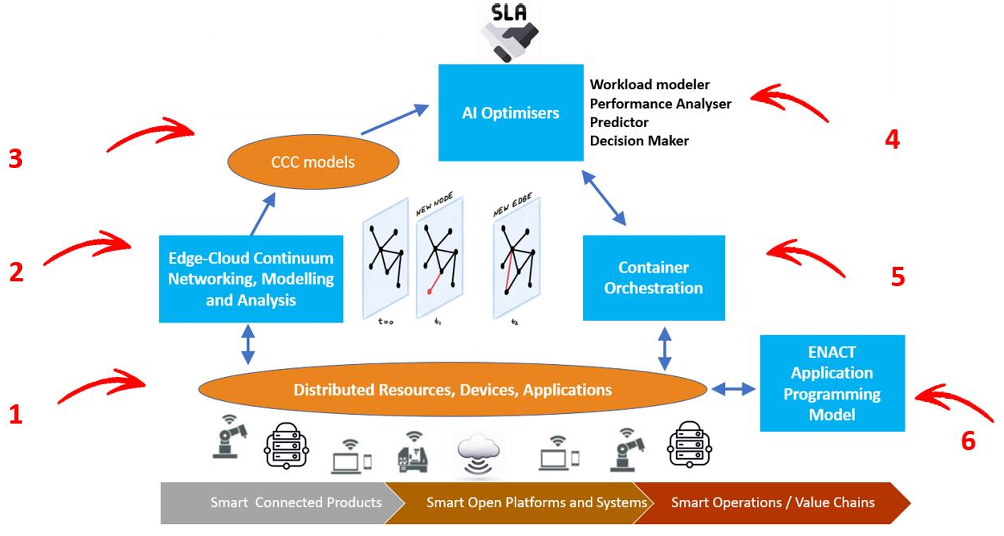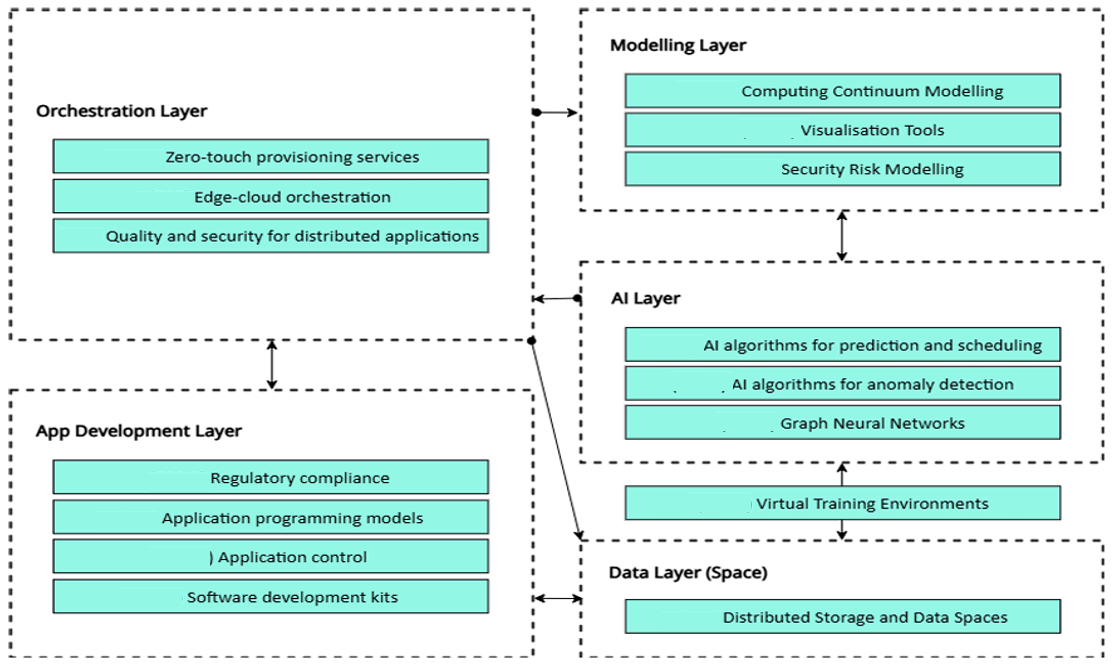Current state-of-the-art architectures often approach the computing continuum as separate islands, each optimized individually but rarely communicating fluidly. This fragmentation creates substantial challenges in orchestrating workloads efficiently, ensuring real-time responsiveness, and maintaining security and compliance across dispersed infrastructures. ENACT is taking on this challenge, proposing a radical shift towards a unified, Cognitive Computing Continuum (CCC) designed to break down these silos.

ENACT Project Phases
At the core of ENACT’s vision is a holistic, hyper-distributed approach. Unlike conventional edge-cloud models, ENACT doesn’t just add intelligence to endpoints or optimize isolated data centers. Instead, it treats the continuum as an interconnected, intelligent ecosystem, empowered by advanced artificial intelligence and adaptive orchestration. In this context, it introduces innovative mechanisms to support flexible and adaptive modelling of the continuum to represent dynamic topologies and heterogeneous resources, adaptation at both application and infrastructure level and security, trustworthiness, and regulatory compliance.
Cognitive Orchestration lies at the core of ENACT to optimize the distribution of workloads considering the available resources across the entire continuum while dynamically adapting to network and infrastructure changes as well as to the operational demands of hyper-distributed applications.
ENACT’s AI-powered orchestration engine leverages both historical application and infrastructure data, as well as real-time insights on the continuum state derived from the Edge-Cloud Continuum Modelling mechanisms. It employes advanced AI and deep learning techniques to allow for enhanced workload allocation decision-making, dynamic self-adaptability, but also AI-based forecasting models and inference capabilities for predicting near-future resource needs that enable proactive management across the continuum.
ENACT places particular focus on delivering a user-centric solution that facilitates system interaction for both developers and end users. To achieve this, on the one hand, it incorporates specialized mechanisms to automate application development and support application-level adaptability, i.e., adapting to dynamic continuum changes to optimize application performance at runtime. On the other hand, ENACT offers real-time visualization of the ENACT continuum using graph models, providing users with a clear and easily comprehensible view of the distributed resources and their interconnections.
Security and AI compliance have also been foundational in ENACT’s architecture. ENACT provides tools that automatically verify the compliance of applications with the EU AI Act regulatory framework. Last but not least, ENACT dynamically performs security risk modelling in the sense that it identifies potential security threats throughout the continuum and provides users with bespoke risk mitigation strategies. This risk-aware approach ensures security, regulatory compliance and trust across hyper-distributed deployments.
The aforementioned innovations are consolidated through the use of pertinent modelling mechanisms that provide a semantically rich representation of assets such as applications, resources and data, as well as their interrelations. Modelling both application and infrastructure semantics ensures seamless system components’ interoperability and smooth data flow across the continuum.

Topics and Subtopics in relation to ENACT Layers
Ultimately, ENACT’s ambition is to deliver a computing continuum that is not just technically cohesive but strategically intelligent. By breaking away from fragmented architectures, it seeks to transform the way digital services are developed, deployed, and managed—making complex distributed systems manageable, resilient, and inherently adaptive to changing demands.
ENACT represents more than an incremental improvement—it embodies a comprehensive rethinking of how we envision and utilize the computing continuum. By embedding intelligence throughout the infrastructure and fostering seamless interoperability, ENACT aims to establish a new standard for efficiency, scalability, and innovation.
